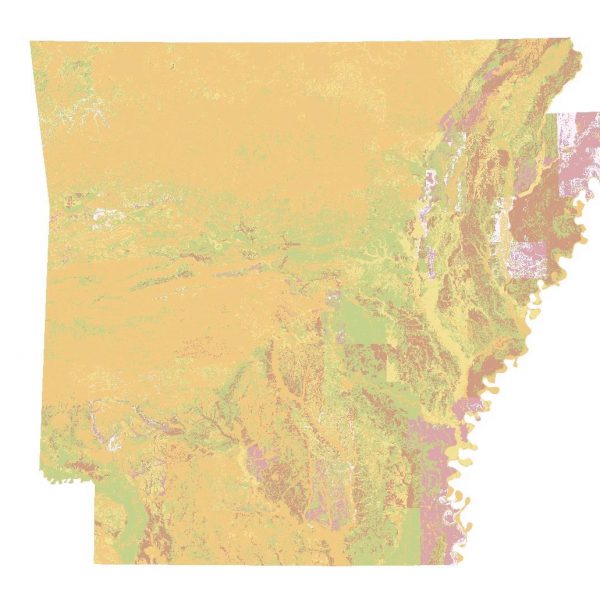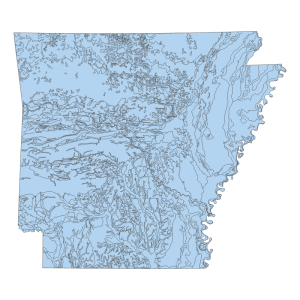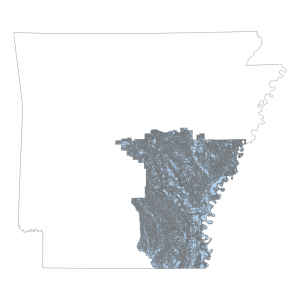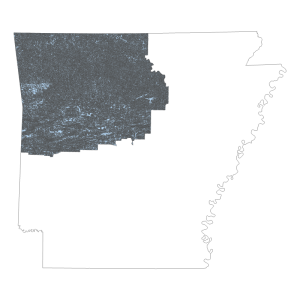Data Description
gSSURGO Muaggat FY 2013
This dataset is called the Gridded SSURGO (gSSURGO) Database and is derived from the Soil Survey Geographic (SSURGO) Database. SSURGO is generally the most detailed level of soil geographic data developed by the National Cooperative Soil Survey (NCSS) in accordance with NCSS mapping standards. The tabular data represent the soil attributes, and are derived from properties and characteristics stored in the National Soil Information System (NASIS). The gSSURGO data were prepared by merging traditional SSURGO digital vector map and tabular data into State-wide extents, and adding a State-wide gridded map layer derived from the vector, plus a new value added look up (valu) table containing “ready to map” attributes. The gridded map layer is offered in an ArcGIS file geodatabase raster format. The raster and vector map data have a State-wide extent. The recently released (2011) gSSURGO value added look up (valu) table (created by USDA-NRCS) contains attribute data summarized to the map unit level using best practice generalization methods intended to meet the needs of most users. The generalization methods include map unit component weighted averages and percent of the map unit meeting a given criteria.Summarized description of the Format and organization of SSURGO:Adjacent soil surveys may have been composed by different individuals, and may be of widely different vintages. Any given survey must comply with basic standards, but older surveys reflect a more generalized approach than more modern surveys. The figure to the right illustrates such differences.Polygons represent a repeating pattern of legend entries: groups of map-able soil concepts called map unitsMap unit data is stored in the mapunit table, and is referenced by the field mukeyPre-aggregated map unit data is stored in the muaggatt table, and is referenced by the field mukeyMap units are comprised of multiple, unmapped soil types called ‘components’Component data is stored in the component table, and is referenced by the field cokeySoil components (or soil type) are associated with multiple horizonsHorizon data is stored in the chorizon table, and is referenced by the field cokeySince there is a 1:many:many (mapunit:component:horizon) relationship between spatial and horizon-level soil property data two aggregation steps are required in order to produce a thematic mapSource: http://casoilresource.lawr.ucdavis.edu/drupal/book/export/html/335Summary Descriptions of gSSURGO Soil Survey Attributes contained within the MUAGGATT table.MUAGGATT Table:Slope Gradient – Dominant ComponentSlope Gradient – Weighted AverageBedrock Depth – MinimumWater Table Depth – Annual MinimumWater Table Depth – April to June MinimumFlooding Frequency – Dominant ConditionFlooding Frequency – MaximumPonding Frequency – PresenceAvailable Water Storage 0-25 cm – Weighted AverageAvailable Water Storage 0-50 cm – Weighted AverageAvailable Water Storage 0-100 cm – Weighted AverageAvailable Water Storage 0-150 cm – Weighted AverageDrainage Class – Dominant ConditionDrainage Class – WettestHydrologic Group – Dominant ConditionIrrigated Capability Class – Dominant ConditionIrrigated Capability Class – Proportion of Mapunit with Dominant ConditionNon-Irrigated Capability Class – Dominant ConditionNon-Irrigated Capability Class – Proportion of Mapunit with Dominant ConditionRating for Buildings without Basements – Dominant ConditionRating for Buildings with Basements – Dominant ConditionRating for Buildings with Basements – Least LimitingRating for Buildings with Basements – Most LimitingRating for Septic Tank Absorption Fields – Dominant ConditionRating for Septic Tank Absorption Fields – Least LimitingRating for Septic Tank Absorption Fields – Most LimitingRating for Sewage Lagoons – Dominant ConditionRating for Sewage Lagoons – Dominant ComponentRating for Roads and Streets – Dominant ConditionRating for Sand Source – Dominant ConditionRating for Sand Source – Most ProbableRating for Paths and Trails – Dominant ConditionRating for Paths and Trails – Weighted AverageErosion Hazard of Forest Roads and Trails – Dominant ComponentHydric Classification – PresenceRating for Manure and Food Processing Waste – Weighted Average
[Keywords: SSURGO Geospatial Data Gateway soils vector GDG Soil Survey gSSURGO farming environment ]






